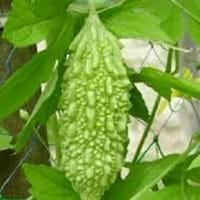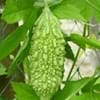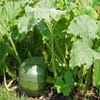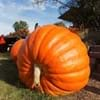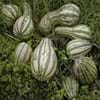Life Span
Annual
Annual or Biennial
Origin
North America, Mexico, Central America
Europe, Northern Africa, Asia
Types
Not Available
Not Available
Number of Varieties
Not Available
Habitat
Loamy soils, Moist Soils, Subtropical climates
Coastal Regions, Marshy ground, Wet ground
USDA Hardiness Zone
5-7
Not Available
Sunset Zone
A1, A2, A3, H1, H2, 1a, 1b, 2a, 2b, 3a, 3b, 4, 5, 6, 7, 8, 9, 10, 11, 12, 13, 14, 15, 16, 17, 18, 19, 20, 21, 22, 23, 24
Not Available
Habit
Vining/Climbing
Upright/Erect
Flower Color
Yellow, Orange, Dark Green
White
Flower Color Modifier
Bicolor
Bicolor
Fruit Color
Yellow, Dark Green
Tan, Brown
Leaf Color in Spring
Green, Dark Green
Light Green
Leaf Color in Summer
Green, Dark Green
Green, Light Green
Leaf Color in Fall
Green, Dark Green
Green, Light Green
Leaf Color in Winter
Not Available
Not Available
Leaf Shape
Palmate
Irregular
Plant Season
Summer, Fall
Spring, Summer
Sunlight
Full Sun
Full Sun
Growth Rate
Very Fast
Fast
Type of Soil
Loam, Sand
Loam
The pH of Soil
Neutral
Neutral, Alkaline
Soil Drainage
Well drained
Well drained
Bloom Time
Indeterminate
Late Spring
Tolerances
Drought
Drought
Where to Plant?
Ground
Container, Ground
How to Plant?
Seedlings
Seedlings, Transplanting
Plant Maintenance
Medium
Low
Watering Requirements
Keep ground moist, Requires regular watering
Keep ground moist, Requires regular watering
In Summer
Lots of watering
Lots of watering
In Spring
Moderate
Moderate
In Winter
Average Water
Average Water
Soil pH
Neutral
Neutral, Alkaline
Soil Type
Loam, Sand
Loam
Soil Drainage Capacity
Well drained
Well drained
Sun Exposure
Full Sun
Full Sun
Pruning
Cut out old flower stalks, Prune after flowering, Remove dead or diseased plant parts
Remove damaged leaves, Remove shoots
Fertilizers
Apply 10-10-10 amount, Apply 12-12-12 amounts, Nitrogen, Phosphate, Potassium
Less fertilizing
Pests and Diseases
Aphids, Army-worms, Bacteria wilt, Bacterial leaf spot, Blight, Cucumber beetles, Cutworms, Fusarium leaf spot, Red spider mite
Bacteria, Downy mildew, Fungal Diseases, fungus, Mosaic viruses, Pink Root, Red blotch
Plant Tolerance
Drought, Full Sun, Salt and Soil Compaction
Frost
Flower Petal Number
Single
Single
Fragrant Bark/Stem
No
Yes
Foliage Texture
Coarse
Coarse
Foliage Sheen
Matte
Glossy
Attracts
Bees, Flies, Flying insects
Insects, Mice, Rodents, Spider Mites
Allergy
Hypoglycaemic Coma, Irregular Heart Rhythm, Miscarriage
Irritation to stomach
Aesthetic Uses
Not Used For Aesthetic Purpose
Not Used For Aesthetic Purpose
Beauty Benefits
Acne, For treating wrinkles, Improve hair condition, Nourishes scalp, Removes dandruff
Good for skin, Improve skin condition, Moisturizing, Skin Problems
Environmental Uses
Food for animals, Insect Repellent
Air purification, Food for animals, Food for birds, Food for insects
Medicinal Uses
Anti-fungal, Detoxification, Diabetes, Gastrointestinal disorders, Weight loss
Cancer, Combats Stress, Eye Problems, High blood pressure, High cholestrol, Indigestion, Inflammation, Weight loss
Part of Plant Used
Fruits
Leaves, Seeds
Other Uses
Cosmetics, Repellent, Use in Chinese herbology
Employed in herbal medicine, Oil is used in perfume, soaps, creams, etc., Used As Food, Used for its medicinal properties, Used as a spice
Used As Indoor Plant
No
Yes
Used As Outdoor Plant
Yes
Yes
Garden Design
Dried Flower/Everlasting, Vine
Container, Edible, Herb / Vegetable
Botanical Name
CUCURBITA pepo 'Bicolor Pear'
APIUM graveolens
Common Name
Bicolor Pear Gourd, Ornamental Gourd
Celery
In German
Bittermelone
Sellerie
In French
Momordica charantia
Céleri
In Spanish
Momordica charantia
Apio
In Greek
Not Available
Σέλινο
In Portuguese
Momordica
Aipo
In Polish
Przepękla ogórkowata
Seler
In Latin
Not Available
apium
Phylum
Spermatophyta
Tracheophyta
Class
Magnoliopsida
Magnoliopsida
Family
Cucurbitaceae
Apiaceae
Clade
Not Available
Angiosperms, Asterids, Eudicots
Tribe
Not Available
Apieae
Subfamily
Cucurbitoideae
Apioideae
Number of Species
Not Available
Importance of Bitter Gourd and Celery
Want to have the most appropriate plant for your garden? You might want to know the importance of Bitter Gourd and Celery. Basically, these two plants vary in many aspects. Compare Bitter Gourd and Celery as they differ in many characteristics such as their life, care, benefits, facts, etc. Every gardener must at least have the slightest clue about the plants he wants to plant in his garden. Compare their benefits, which differ in many ways like facts and uses. The medicinal use of Bitter Gourd is Anti-fungal, Detoxification, Diabetes, Gastrointestinal disorders and Weight loss whereas of Celery is Cancer, Combats Stress, Eye Problems, High blood pressure, High cholestrol, Indigestion, Inflammation and Weight loss. Bitter Gourd has beauty benefits as follows: Acne, For treating wrinkles, Improve hair condition, Nourishes scalp and Removes dandruff while Celery has beauty benefits as follows: Acne, For treating wrinkles, Improve hair condition, Nourishes scalp and Removes dandruff.
Compare Facts of Bitter Gourd vs Celery
How to choose the best garden plant for your garden depending upon its facts? Here garden plant comparison will help you to solve this query. Compare the facts of Bitter Gourd vs Celery and know which one to choose. As garden plants have benefits and other uses, allergy is also a major drawback of plants for some people. Allergic reactions of Bitter Gourd are Hypoglycaemic Coma, Irregular Heart Rhythm and Miscarriage whereas of Celery have Irritation to stomach respectively. Having a fruit bearing plant in your garden can be a plus point of your garden. Bitter Gourd has showy fruits and Celery has no showy fruits. Also Bitter Gourd is not flowering and Celery is not flowering . You can compare Bitter Gourd and Celery facts and facts of other plants too.
